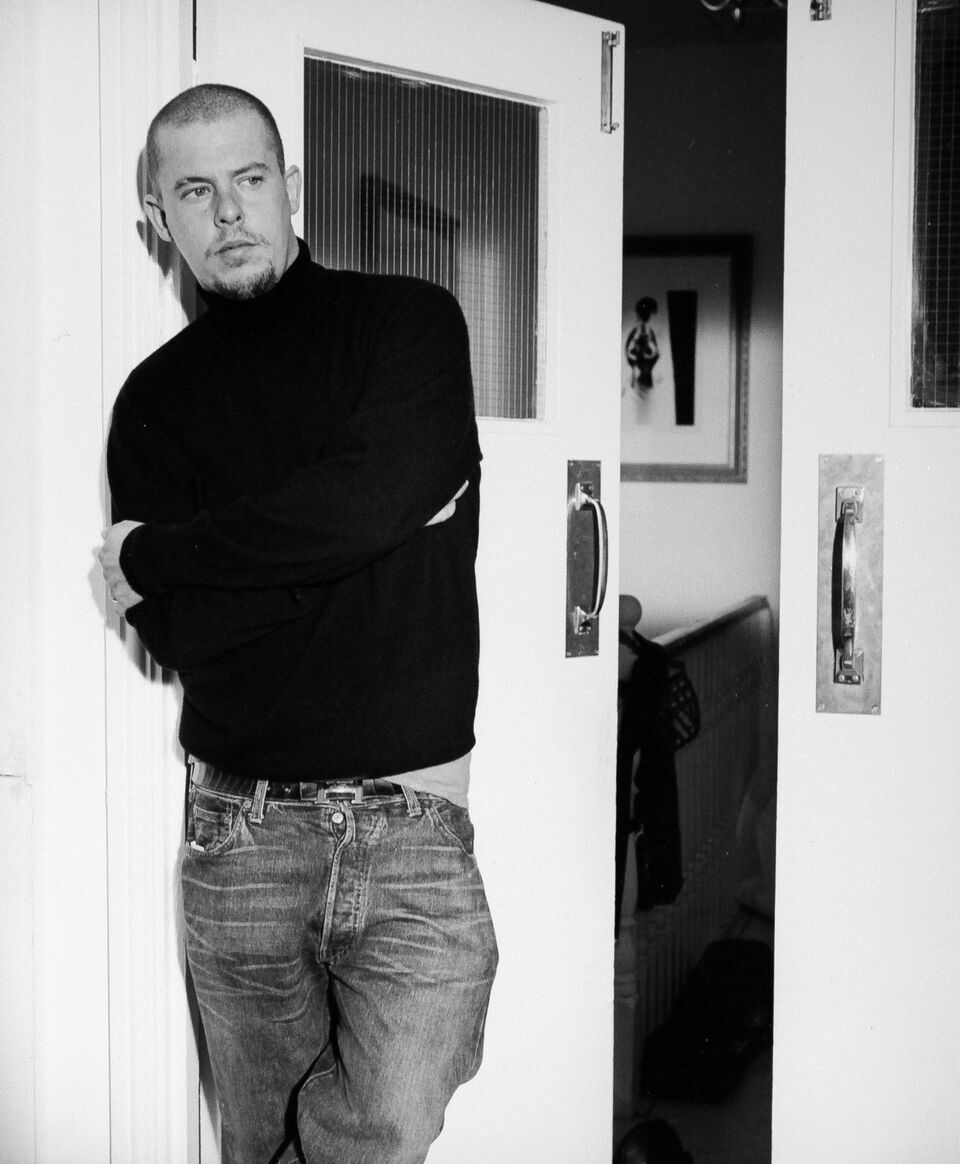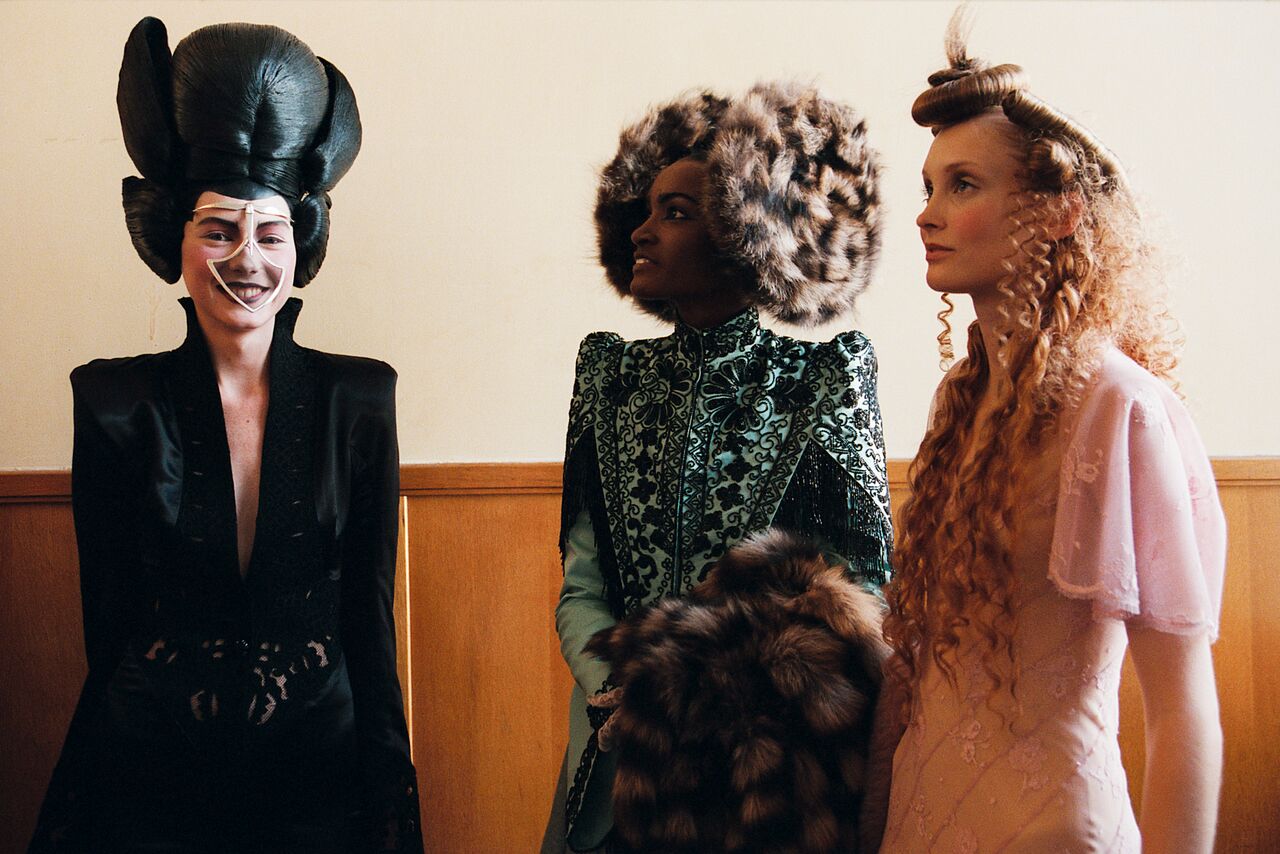Alexander McQueen’s meteoric rise through the ranks of the fashion world is one that has rarely been seen since, and separates him from the caliber of fashion designers that came before or after him. What set him apart was the expanse of his vision; he combined all manner of influences together that had never been incorporated into high fashion before: classical mythology with subculture, social commentary with beauty, horror and the avant garde, and lowbrow with haute couture.
When people think of outlandish runway models wearing extravagant designs that you’d never see worn in real life, well, McQueen is pretty much responsible for most of it during his turn as chief designer for Givenchy and for his own brand in the ‘90s. But the point McQueen labored over making in his designs was that fashion is much more than an indulgent sport for the rich— it is a means to tell a story through a garment, or an artistic outlet like a painting, and the stitches, embellishments and notions are the brushstrokes with which it is rendered.
So it was nothing less than a shock when in 2010— a couple decades after producing his own legendary fashion house that attracted supermodels, celebrities, musicians and pretty much made him a household name— McQueen committed suicide in his London home. He was 40 years old. By that time, the wunderkind had reached an enviable amount of success and the respect of the fashion world that before had oscillated between reverence and rejection. So his death obviously stunned the fashion elite and the wider Western culture he had permeated into.
The life and work of McQueen is expertly told in Ian Bonhôte and Peter Ettedgui’s documentary, McQueen. Its extensive research into the archives of McQueen’s past interviews, intimate recordings, candid footage, and interviews with McQueen’s close family (who, according to the film’s production notes, refused to participate in the film at first) illustrate a comprehensive portrait of the enfant terrible of the fashion world. This film also is one of multiple film projects that exist to memorialize the late designer (a film biopic has been up in the air as of 2016), but Bonhôte and Ettedgui’s doc is the most definitive project that opens viewers’ eyes to the sensitive, troubled soul behind the legendary brand.

Broken up into five chapters and punctuated with skull iconography that was a motif throughout McQueen’s work, McQueen delves into the early beginnings of his life, as the son of a working class family in East London. Not particularly social— he characterized himself as shy and “unremarkable”— Lee Alexander McQueen developed an interest in clothing in his teens, and after having left school at 16 became a skilled tailor at a haberdashery. His time as a tailor cemented his passion for clothing design and instilled in him a work ethic that would both shape and break him over the course of his life (McQueen ran his Alexander McQueen brand in London while he was chief designer at Givenchy in Paris, and he would often fly back and forth to operate both which would go on to suck away his creative and mental energies).
Among his professional accomplishments, McQueen’s theatrical fashion collection presentations “VOSS,” “the Highland Rape,” “Jack the Ripper Stalks His Victims,” and his cheeky “bumsters” jeans are highlighted and dissected by friends, witnesses and collaborators who provide interesting first hand accounts of their execution and genius, although they weren’t without controversy; “Highland Rape,” which recalls a particularly dark chapter in Scottish history, brought on the fury of feminist groups who objected to the subject matter being twisted for fashion. The ‘bumsters’, a low rise pant which revealed part of the lower spine and buttock, were classified as tacky and gross. McQueen weathered all the flack from the press and the fashion elite, but his quietly grew to resent the fashion world for it.
The treat for McQueen fans is to see his iconic fashion collections again in all their dramatic, spectacular glory, and learn from fellow designers the conceptual basis behind each one. It’s a delight to see such stunning pieces individually and as a cohesive collection, and it conjures the point that among McQueen’s many strengths was his attention to detail, his fearlessness in diving into the grotesque, and an imagination that could blow you away. “I would go to the end of my dark side and pull these horrors out of my soul and put them on the catwalk,” McQueen says in one interview.

Despite all his success, the film points out the many hardships McQueen faced, like the pressures to fit in the Parisian fashion world; his dwindling friend group as his star rose higher; his harsh self-criticism and feelings of inadequacy; loneliness and his own personal body image issues. However, it presents these topics in a balanced, nuanced light that don’t take away from his success but add an additional dimension to understanding his thought process and sensibilities. There are as many reflections of pain, horror and death in McQueen’s designs, a morbid quality that, immediately after his suicide, made his works a little more difficult to swallow for audiences. Overall, Bonhôte and Ettedgui veer away from a saccharine, conventional documentary that elicits even more appreciation for the revolutionary approach to design and craftsmanship the fashion world would never forget.
“Lee started a movement called Alexander McQueen,” says Sebastian Pons, a Majorcan designer, close friend and assistant designer to McQueen. “There was nothing else like it. He used to say that he was not going into fashion, because fashion was boring. It was time to break the rules and bring new energy and new meaning to it. He created theater that brought you into his world — whether you liked it or not.”
Aimee Murillo is calendar editor and frequently covers film and previously contributed to the OCW’s long-running fashion column, Trendzilla. Don’t ask her what her favorite movie is unless you want to hear her lengthy defense of Showgirls.


I’m in attraction with the cbd products and https://organicbodyessentials.com/products/cbd-oil-for-sleep ! The serum gave my shell a youthful support, and the lip balm kept my lips hydrated all day. Eloquent I’m using disinfected, simpleton products makes me desire great. These are now my must-haves for a unorthodox and nourished look!